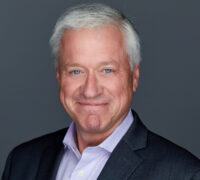
Why leaders should learn to value the boundary spanners
Entrepreneurial talent who work with other teams often run into trouble with their managers. Here are ways to get the most out of your ‘boundary spanners’...

by Michael D. Watkins Published September 3, 2021 in Brain Circuits • 3 min read
Far more new CEOs are promoted internally than are hired from outside. However, leaders who come from within the firm face unique challenges and they get less attention and support when stepping into their new role. If you find yourself in this situation, here are five actions you can take in order to avoid common challenges insider CEOs often face.
Visualize yourself in your new role early on and consciously move yourself out of the old one.
Internally appointed CEOs often find themselves operating in the shadow of their past. Escaping this requires a shift in your mindset.
It’s important to adopt different attitudes towards key business drivers and managing risk to those you had in your previous role. New CEOs should show their commitment to the entire company, not just their former areas of responsibility.
Seek out different perspectives.
It is essential to develop close relationships with executives from those parts of the organization unfamiliar to you, not just those your trusted allies in the divisions you used to lead.
New CEOs quickly realize they have to make decisions that will upset some of the people who backed them for promotion and perhaps expected to benefit from their appointment. But CEOs can’t represent a narrow set of interests or favor friends, and must avoid any perceptions that they do.
Rapidly assess all direct reports and other key stakeholders and build your own team.
This means “re-enlisting” the people you want to keep through early, direct conversations and figuring out as quickly as possible if there are some with whom you can’t work.
In almost every case, CEOs who rise from within have to lead people who were formerly their equals, or even their superiors. In an ideal situation, all of them would be fully supportive of the promotion.
But it’s not always that easy. New leaders might be confronted with would-be competitors who lost out on the top job, or executives with whom they’ve clashed in the past.
Strike a balance between making immediate changes and long-term planning.
CEOs appointed from within – after years of learning all there is to know about the organization – often have a long list of things they want to do.
Consider your priorities and timing before acting on your pent-up desires. Why? Because the business might not be ready for the level of change you as the new CEO want to drive. There also is the risk of change fatigue (and failure) if you try to do too much too early.
It’s important to avoid putting too much stress on individuals and resources by trying to do too much at an unrealistic pace.
Devote significant effort to ensuring that your predecessor’s exit is as smooth as possible.
Any transfer of power – even when the incumbent CEO is leaving on good terms – presents challenges, especially if there is overlap between the outgoing and incoming leaders.
Having multiple CEOs in the room will only lead to confusion about who is in charge. This is not to say that there should be no overlap between outgoing and incoming leaders – it just has to be managed carefully.

Professor of Leadership and Organizational Change at IMD
Michael D Watkins is Professor of Leadership and Organizational Change at IMD, and author of The First 90 Days, Master Your Next Move, Predictable Surprises, and 12 other books on leadership and negotiation. His book, The Six Disciplines of Strategic Thinking, explores how executives can learn to think strategically and lead their organizations into the future. A Thinkers 50-ranked management influencer and recognized expert in his field, his work features in HBR Guides and HBR’s 10 Must Reads on leadership, teams, strategic initiatives, and new managers. Over the past 20 years, he has used his First 90 Days® methodology to help leaders make successful transitions, both in his teaching at IMD, INSEAD, and Harvard Business School, where he gained his PhD in decision sciences, as well as through his private consultancy practice Genesis Advisers. At IMD, he directs the First 90 Days open program for leaders taking on challenging new roles and co-directs the Transition to Business Leadership (TBL) executive program for future enterprise leaders, as well as the Program for Executive Development.

July 3, 2025 • by Eric Quintane in Brain Circuits
Entrepreneurial talent who work with other teams often run into trouble with their managers. Here are ways to get the most out of your ‘boundary spanners’...

July 2, 2025 • by Susan Goldsworthy in Brain Circuits
When we feel stressed, we’re more likely to operate from a place of fear and fall back on a mindset that is fixed, judgmental, and focused on polarities – behaviour that soon...

July 1, 2025 • by Gopi Kallayil in Brain Circuits
Artificial intelligence is perhaps the most far-reaching technology ever created. Google’s AI business strategist Gopi Kallayil recommends asking yourself three key questions regarding your business strategy and identifies three AI capabilities you...

June 30, 2025 • by Sunita Sehmi in Brain Circuits
Many leaders feel compelled to motivate their teams to perform by being highly solutions-focused – but learning rather than directing often leads to better results. Consult the following checklist to guage whether...
Explore first person business intelligence from top minds curated for a global executive audience